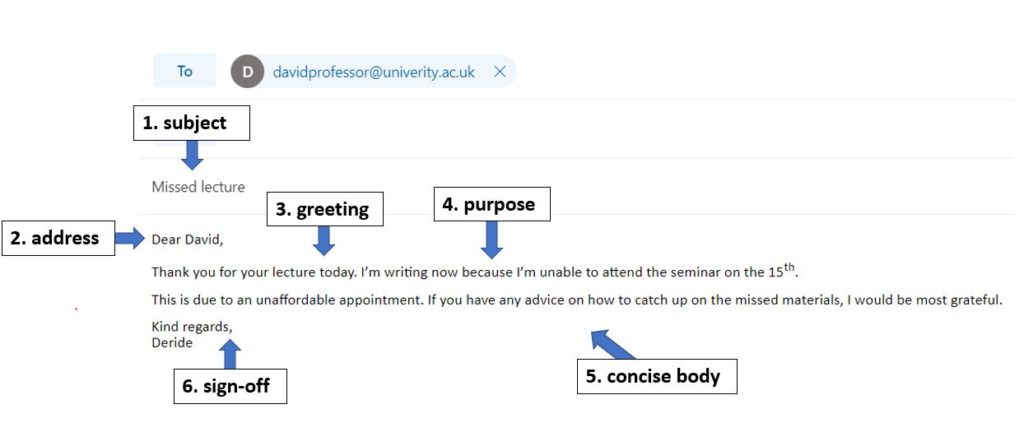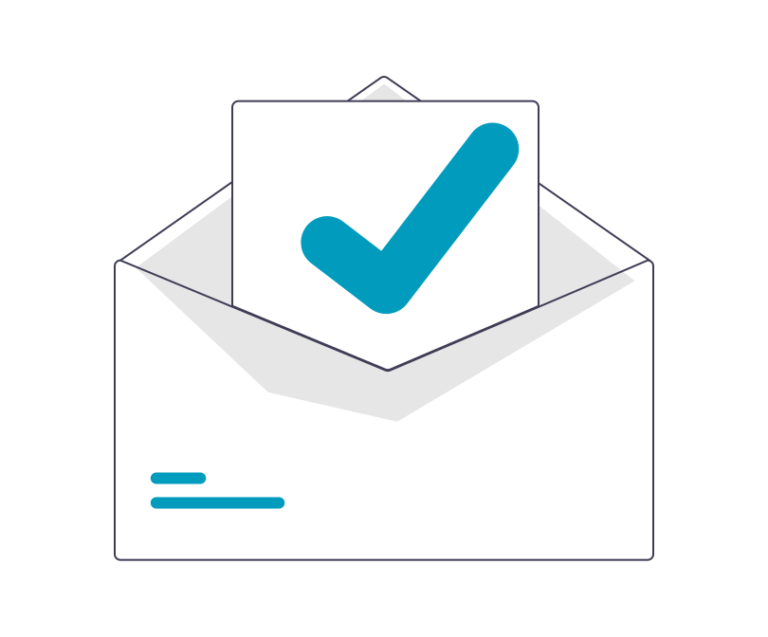What are the 6 key features of a formal email?

This is the first of two chapters about Writing Formal Emails. To complete this reader, read each chapter carefully and then unlock and complete our materials to check your understanding.
– Learn about the pitfalls of email writing at university
– Study the six elements of a successful formal email
– Complete the Lesson Worksheet to improve English proficiency and confidence
Chapter 1
While almost all written correspondence was once formal in style, due to the advent of computers, social media and messenger platforms, this is now rarely the case. In fact, as with spoken conversation, written communication is often now highly informal and conversational. So what does this mean for university students and recent high-school graduates?

The outcome is that many young people today compose emails to their professors and prospective employers that lack the appropriate conventions of this type of communication. By being too casual and informal, students risk portraying themselves negatively in academic and professional settings, potentially (and inadvertently) costing them marks or career opportunities. Thankfully, there are a few simple rules when composing emails that can be memorised to ensure that you message is delivered clearly, concisely and respectfully. Chapter 1 will first look at the overall structure of a formal email, demonstrating the six key features that successful emails include. Chapter 2 then wraps up this reader by exploring the various language structures available to students that match these six features.
The Six Key Features


1. Subject
The first feature of an email that you should always remember to get right is the ‘subject’ line. This is an element of all emails, but because this section is filled out above the actual email it is sometimes overlooked. However, having a clear and concise subject is important. This element will be the first thing the receiver reads and, depending on who you are writing to and why, may be the difference between your email being read immediately, or being left for ‘later on’. Some examples might include ‘Missed Tutorial’, ‘Absence Request’, ‘Job Application’ or ‘Homework Submission’.



2. Address
It’s appropriate etiquette to always start an email with an address, such as ‘Dear David’, ‘Hi John’ or ’Good Morning All’. Depending on who the receiver is, it may be considered rude if you forget to do this. Plus, it better guarantees that you’re sending your email to the right person.
3. Greeting
It is also a good idea to include some sort of a greeting message at the start of an email, such as ‘Thank you for your lecture today’ or ‘I hope you’re well and not too busy’. While such a greeting isn’t compulsory, it can set a friendly tone for the rest of the correspondence and is considered an aspect of polite etiquette.
4. Purpose
It may sometimes seem obvious from the next element, the body, but it is usually helpful to explicitly signpost to the recipient why you are emailing. Emails should be fairly quick to read and easy to process, and therefore it’s important to be explicit and clear wherever possible. Summarise the purpose of your email into one short sentence and let the reader know about that purpose early on.
5. The Body
Much the same as in an essay, an email also has a main body section that relays whatever it is you are communicating. And, much like in an essay, the aim here is to be clear, concise and coherent and cohesive. Edit the body section of your email carefully, omitting any unnecessary detail and rewriting any passages that could be expressed in fewer words. Should your body section be larger than normal, consider also creating smaller paragraphs than you would in an essay so that the information can be scanned more quickly. Three of four sentences is normally about right.
6. Sign-off
The last essential step in composing a formal email is the sign-off where you end the email with an expression such as ‘kind regards’ or ‘many thanks’ and then the author’s name. As we will see in Chapter 2 of this reader, there are a few expressions a writer can select here.
Now that you’ve read through the basics of composing a successful email, you can review this knowledge by downloading and completing our Chapter 1 Worksheet. Then continue developing your knowledge of this topic with Chapter 2.


To reference this reader:
Academic Marker (2022) Writing Formal Emails. Available at: https://academicmarker.com/academic-guidance/teaching-and-learning/correspondence/writing-formal-emails/ (Accessed: Date Month Year).
Downloadables
Once you’ve completed both chapters in this short reader about Writing Formal Emails, you might then wish to download our Chapter Worksheets to check your progress or print for your students. These professional PDF worksheets can be easily accessed for only a few Academic Marks.
Chapter 1 explores the topic: What are the 6 key features of a formal email? Our Chapter 1 Worksheet (containing guidance, activities and answer keys) can be accessed here at the click of a button.
Chapter 2 explores the topic: Which language helps compose academic emails? Our Chapter 2 Worksheet (containing guidance, activities and answer keys) can be accessed here at the click of a button.
To save yourself 1 Marks, click on the button below to gain unlimited access to all of our Writing Formal Emails Chapter Worksheets. This All-in-1 Pack includes every chapter, activity and answer key related to this topic in one handy and professional PDF.
Collect Academic Marks
-
100 Marks for joining
-
25 Marks for daily e-learning
-
100-200 for feedback/testimonials
-
100-500 for referring your colleages/friends